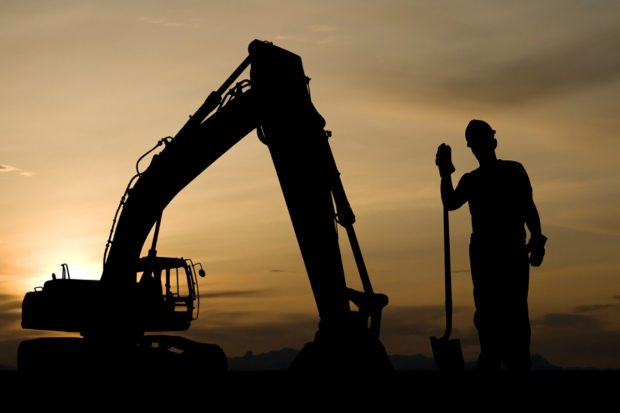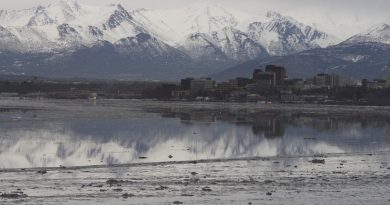Is Alaska getting its fair share from mining?

As debate rages over the environmental consequences of the proposed Pebble gold and copper mine in Southwest Alaska, some are wondering what financial gain the state might get from allowing the project to move ahead.
Alaska taxes companies mining on state lands, but the revenue raised pales in comparison to the billions of dollars paid by oil companies to tap crude and natural gas. Even though Pebble is often called North America’s largest undeveloped gold and copper mine, don’t expect massive tax revenue such as that on the North Slope.
Alaska’s mining tax structure hasn’t been updated much since the territory became a state. Despite changes to mining tax credits and educational opportunities, the base tax structure adopted in 1955 is still in place today.
In 2012, the state collected nearly $41 million in revenue from mining license taxes. By comparison, oil and gas production generated more than $6.1 billion. The latter funds the majority of state government, so much that Alaskans pay no state income or sales taxes and receive a dividend each year from a rainy-day investment account seeded with oil money.
Even Alaska’s prolific fisheries, a renewable resource, generated more tax revenue than mining — about $53 million in 2012.
Alaska was built on mining, and with new interest in rare earth minerals, state leaders have been touting to the world’s mining industry that the Last Frontier “is open for business.”
Mining, of course, is controversial because of the potential environmental impacts. Factor in that the state doesn’t collect very much from the resources taken from its lands and mining can seem even more risky. But whether Alaska is getting its fair share is hard to say.
“Fair share is a lot like beauty — different people look at the same share and come up with different attitudes about it,” said Bob Loeffler, a natural-resources consultant and professor of public policy at the University of Alaska Anchorage. “It’s not like there’s a definition of fair share.”
Rich Alaska history
The turn of the 20th century brought thousands to the territory in search of striking it rich in Alaska. Communities boomed and busted. Nome and Fairbanks found their roots. Alaska went from no-man’s land to a land of dreams.
That rich history is still expressed today. Until recently, all Alaska license plates were decorated with a line of men climbing Chilkoot Pass — the most direct way to get to gold fields of Interior Alaska and the Yukon. But trying to find an actual miner in Alaska? Good luck.
By 1916, Alaska mining peaked in total number of workers, with 8,590. Wages then ranged from $3 to $5 per shift, with free board in Nome during the high season, according to Alaska Economic Trends magazine.
By 1959, the mining workforce dwindled to 1,700, as production began to switch to oil and gas extraction. The number working in the mining industry held steady for decades.
But that’s been slowly changing, especially in recent years. An upturn began in 2005, with the opening of mines like Pogo gold mine in Interior Alaska and renewed interest in other prospects, like the Upper Kobuk Mineral Project.
Six mines account for the majority of minerals mined in the state. And Red Dog mine — one of the world’s largest zinc mines located on Native corporation land in Northwest Alaska — is the busiest of them all. In 2012, Red Dog miners produced 1.2 million metric tons of zinc concentrate, which generated $13.4 million in tax revenue for the state.
‘Lack of interest’
For all the production value and the increase in resources, the state tax system for miners has stayed the same for decades. No matter the size of the mine, all operations fall under the state’s mining license tax.
From 2001 to 2011, the production value of the state’s minerals jumped from just under $1 billion to $3.5 billion, according to a state report. Alaska collected $307.5 million in tax revenue from the mining operations during that period.
For mining operations that make less than $40,000 a year in profit, there is no tax. From there the rates steadily increase. The highest rate — those mines earning more than $100,000 in profit — pay a flat rate of $4,000, plus 7 percent of the net income over $100,000.
Brandon Spanos, manager of the state’s excise tax program, says there’s been a “lack of interest” to tweak the mining license tax structure.
“It’s not the big tax in Alaska,” he said, comparing mining taxes to oil taxes.
Spanos said the mining tax is one of the largest in the excise tax program, which also includes tobacco and alcohol.
Because Alaska’s tax is based on profits, the state stands out compared to others in the nation, Spanos said.
Some states calculate their taxes based on the amount of resources pulled from the ground, or the market value of the natural resource product. For example, Nevada, a western state with a busy mining industry, bases its taxes on net proceeds on the value of the minerals. Many states, including Utah and Michigan, have a severance tax on top of other taxes — including royalties and corporate income tax.
Alaska is competitive when it comes to mining, at least according to an independent consultant. James Otto, a mining tax consultant, looked at Alaska’s mining tax structure in 2008 and found the state ranked somewhere in the middle compared to other states and nations.
“Based on what he said, by looking at other countries, we’re competitive enough to entice businesses to come to the state,” said Johanna Bales, deputy director of the state’s tax division.
Loeffler, the UAA public policy professor, said that with oil and gas taxes making up the lion’s share of Alaska’s general fund, even an increase in mining taxes wouldn’t make much difference.
“It’s not crucial for the state’s budget, but it’s crucial for local budgets,” he said.
He noted some of Alaska’s largest mines make up the majority — if not all — of the tax revenue in local economies. Kensington and Greens Creek are two of the Juneau Borough’s largest taxpayers. Fort Knox gold is the single-largest tax payer in the Fairbanks North Star Borough and the Red Dog Mine is the sole taxpayer in the Northwest Arctic Borough.
‘Is this right?’
State Rep. Paul Seaton, R-Homer, has tried to introduce numerous bills to update the mining tax structure since he took office in 2002.
A self-described “rock hound” who lists one of his hobbies as lapidary — the art of shaping stones into jewelry, Seaton floated legislation in 2007 that would have increased the current rates by 2 percent per income bracket and added a marginal tax bracket for profits over $1 million to be taxed at 11 percent. The bill would have exempted mines that make under $100,000 from paying the mining license tax. The bill made it out of the Alaska House Finance Committee in 2008, but has since stalled.
Seaton said he took on the issue as a proactive measure, not as something pressing for his constituency, though he does note it was interesting that mining, a non-renewable resource, was taxed less than fishing, a renewable resource.
“I looked at the revenue source book and look at the value of minerals extracted from Alaska, and saw such a small amount of money Alaska gets from that,” he said. “It’s one of things that you have to scratch your head and wonder is this right?”
Seaton said he has no immediate plans to try to revive the bill. From a policy standpoint, he thinks it’s a good idea to make changes as the state looks to diversify revenue streams. But with only a small number of mines and only a few with any sort of prospects on the horizon, the issue isn’t pressing.
“Sometimes people have a constituency that’s clamoring for something,” he said. “That’s not the case here.”
Would tax overhaul stifle production?
Proponents of the current tax system say it’s working just fine and that increasing taxes would only stifle production in a far-flung state where natural resource development is already expensive.
Deantha Crockett, president of the Alaska Miners Association — the organization that represents miners across the state — said much of the state’s mining resources are hard to get to, building infrastructure is expensive, and finding skilled workers a challenge. Also, mines take enormous amounts of energy to run. Crockett pointed out that the Fort Knox gold mine near Delta Junction had a $4 million power bill in August 2012.
“If mining was much more lucrative, there would be a lot more mines,” said Karen Matthias, managing consultant for the Council of Alaska Producers. “It’s not a high-margin business.”
Still, even some industry officials agree that one giant mine could change the outlook on taxes.
The proposed Pebble mine, with its estimated 80.6 billion tons of copper and 107.4 million ounces of gold, would by far be the largest mining prospect in Alaska’s mining history. And if it ever gets developed, Alaska’s tax structure will most come under scrutiny.
“If Pebble comes online, we are definitely going to see a hard look and a possible change to the tax structure,” Crockett said. “Pebble, being on state land, could be a huge contribution to the economy.”
Contact Suzanna Caldwell at suzanna(at)alaskadispatch.com



